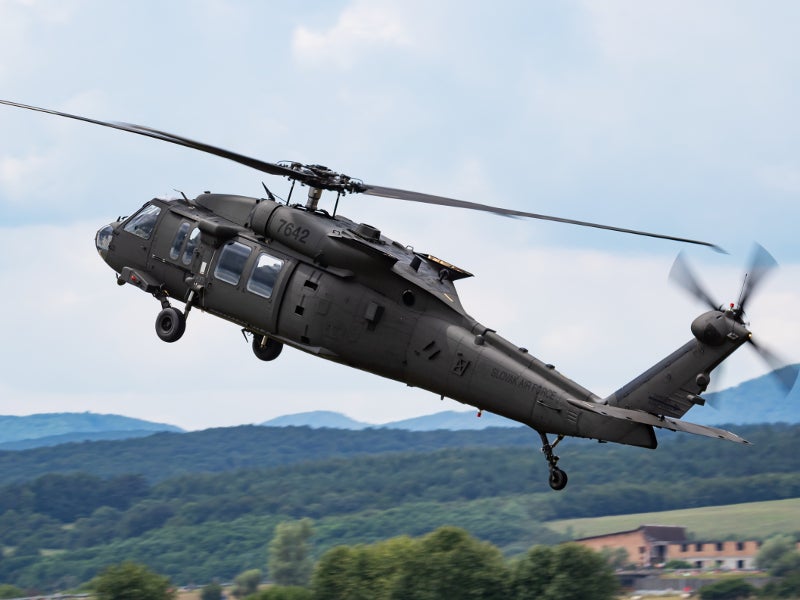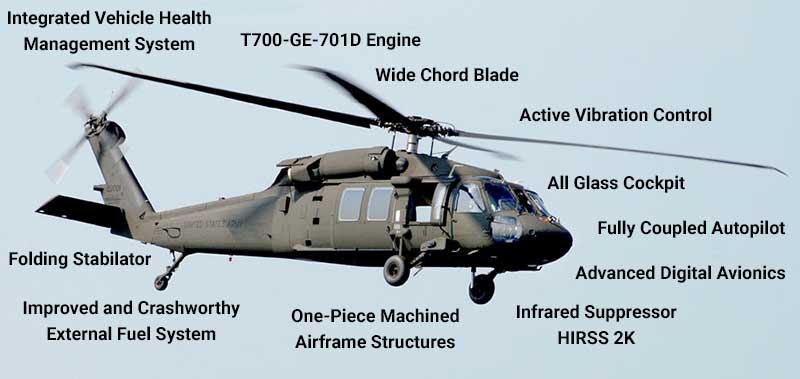Expert Insights: Enhancing Performance in UH 60 Helicopter Workflow
Expert Insights: Enhancing Performance in UH 60 Helicopter Workflow
Blog Article
Recognizing the Mechanics and Engineering Behind Uh 60 Helicopters
The UH-60 helicopter, commonly known as the Black Hawk, stands as a pinnacle of modern rotorcraft innovation, symbolizing a mix of robust engineering and intricate mechanics. As we peel back the layers of the UH-60's design, a world of detailed systems and thorough design comes to light.
Background of UH-60 Helicopters
The background of UH-60 helicopters traces back to the late 1970s when the USA Military sought a flexible and advanced utility helicopter to change its aging fleet. In feedback to this requirement, the Sikorsky Aircraft Company established the UH-60 Black Hawk helicopter. Introduced in 1979, the UH-60 quickly came to be a staple in armed forces operations because of its remarkable abilities.
The UH-60 was made to stand out in a variety of goals, including troop transportation, medical evacuation, digital warfare, and unique operations. Its capacity to adjust to different roles made it a useful possession to the U.S. uh 60. Military and other army forces around the globe
Throughout the years, the UH-60 system has undertaken a number of upgrades and variants to enhance its efficiency and equal progressing mission demands. These helicopters have seen extensive solution in conflicts such as the Gulf Battle, Afghanistan, and Iraq, showcasing their reliability and adaptability in varied operational settings. The UH-60's rich background is a testimony to its enduring tradition as a premier energy helicopter.

Engine and Power Systems
Utilizing cutting-edge propulsion technology, UH-60 helicopters are geared up with advanced engine and power systems to make certain optimum performance and reliability in a series of operational circumstances. The UH-60, commonly referred to as the Black Hawk, is powered by two General Electric T700-GE-701D engines, each efficient in delivering up to 1,940 shaft horse power. These turboshaft engines supply the needed thrust for the helicopter to lug out its objectives properly, consisting of troop transportation, clinical discharge, and fight support.

Rotor System and The Rules Of Aerodynamics
How do the blades system and the rules of aerodynamics of UH-60 helicopters add to their functional performance and trip capabilities? The rotor system of the UH-60 helicopter plays a vital function in supplying lift and propulsion. The UH-60 features a four-bladed, fully expressed blades system that permits for high ability to move and stability during trip. This layout enables the helicopter to carry out a broad range of goals, from transportation and medical discharge to battle procedures. basics
Aerodynamics also play a vital function in the performance of UH-60 helicopters. The structured fuselage and rotor blade design reduce drag, enabling the helicopter to achieve greater speeds and better fuel performance. The aerodynamic design of the UH-60 likewise adds to its capacity to run in varied environmental problems, including high elevations and hot temperature levels.
Avionics and Trip Control Systems

In its detailed coordination with the rotor system and the rules of aerodynamics of UH-60 helicopters, the avionics and trip control systems create an important network of technologies forming the airplane's functional capacities. In the UH-60, these systems include digital screens, interaction radios, General practitioner navigating, weather radar, and auto-pilot systems.
The trip control systems of the UH-60 are in charge of translating the pilot's inputs into the proper changes to the blades system, making certain stable flight and maneuverability. These systems consist of hydraulic actuators, servos, and computer systems that interact to manage see post the major and tail blades, along with various other trip control surfaces. By precisely managing the helicopter's trip characteristics, these systems enable pilots to carry out a broad variety of objectives, from transport and search-and-rescue to fight operations, with precision and confidence.
Duty and Applications in Aeronautics
The duty and applications of avionics and trip control systems in air travel are essential to making sure the efficient and safe procedure of aircraft, including UH-60 helicopters. Avionics systems in UH-60 helicopters encompass a variety of digital systems that aid in navigating, interaction, surveillance, and managing various aircraft features. These systems include electronic display screens, auto-pilot systems, communication radios, GPS navigating devices, and climate radar. Trip control systems play a vital function in maneuvering the helicopter airborne, preserving security, and guaranteeing precise activities. The fly-by-wire modern technology made use of in contemporary UH-60 helicopters Find Out More translates pilot inputs into digital signals, which are then analyzed by the flight control computer systems to change the airplane's control surfaces. Additionally, these systems integrate safety attributes such as autopilot modes, surface understanding alerting systems, and security augmentation systems to boost the total security and operational abilities of the UH-60 helicopters in various objectives, consisting of troop transportation, medical discharge, search and rescue, and aerial firefighting.
Conclusion
In final thought, the UH-60 helicopter is a versatile aircraft with an abundant history and advanced design. Its engine and power systems, blades system, the rules of aerodynamics, avionics, and trip control systems all collaborate to make it a reliable and trusted machine. The UH-60's role and applications in air travel are vast, ranging from armed forces procedures to browse and save objectives. Its proceeded advancement and use demonstrate its value in the area of air travel (uh 60).
In its complex control with the blades system and aerodynamics of UH-60 helicopters, the avionics and flight control systems form a vital network of innovations shaping the airplane's functional abilities.The flight control systems of the UH-60 are responsible for translating the pilot's inputs right into the suitable modifications to the rotor system, ensuring secure trip and maneuverability. Avionics systems in UH-60 helicopters incorporate an array of digital systems that aid in navigating, interaction, monitoring, and controlling various airplane features. Furthermore, these systems include safety and security attributes such as autopilot settings, terrain recognition cautioning systems, and security enhancement systems to improve the overall safety and security and functional capabilities of the UH-60 helicopters in numerous objectives, consisting of army transport, clinical evacuation, search and rescue, and airborne firefighting.
Its engine and power systems, rotor system, the rules of aerodynamics, avionics, and flight control systems all function together to make it a dependable and reliable equipment.
Report this page